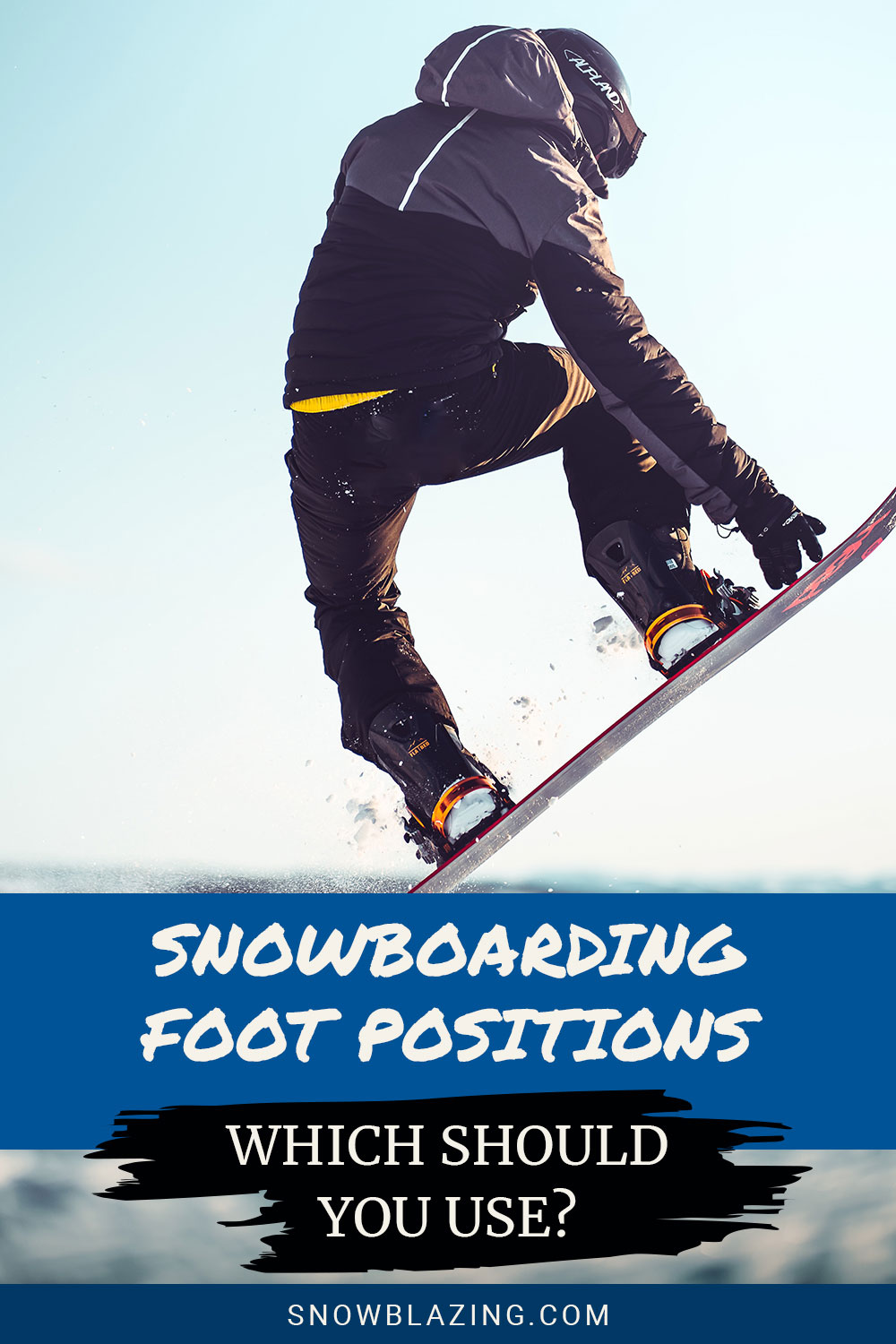Snowboarding Foot Positions – Which Should You Use?
We may earn commissions for purchases made through links on our site. Learn more on our about us page.
Sure footing is a skill needed in all winter sports. Knowing where your feet are and what terrain lies ahead can make or break your alpine adventure experience, not to mention possibly preventing unnecessary injuries.
Snowboarding is on the extreme side of winter alpine sports. Olympic-level competitions require different foot placements to maximize their strengths. Therefore, even beginners need to learn about foot positions to understand the essential skills that go along with them.
What are the best snowboard foot positions?
Defining the “best foot positions” will need more than a one-word answer. Let us talk about four basic foot positions used in snowboarding today; Regular, Goofy, Wide, and Narrow stances.
Regular is when a rider has their right foot leading down the mountain slope. This stance is where most riders begin and most again stay. Goofy is the opposite. Riders leading with their left foot typically needed to start regularly but switch out of necessity.
A narrow stance refers to a rider with a foot placement thinner than the width of their shoulders. The reason for this stance is for sharper turning but compromises balance and stability.
A wide stance is when the feet are placed outside the width of one’s shoulders. This stance is for stability, endurance race events, or long sweeping turns.

How should you decide which snowboarding foot position is best for you?
Take Olympic competitions, for example. There are the Downhill events with the longer turns, where stability and control are critical, requiring different foot placements than, say, a mogul or slalom race with sharper turns.
For the downhill events, a wider stance will be needed. As for the moguls, a narrower stance will allow for better turning and faster acceleration out of those turns.
Personal selection for footing depends on the rider and their experience levels. Instructors will guide beginners towards narrower stances, falling is inevitable, and turning will be the focus as it will be the skill that leads to learning to break.
After the novice stages deciding where to adjust the foot placement on your board may require purchasing a couple of boards themselves to find the best fit. The only sure path to know is trial and error. Go out on a bunny slope somewhere and test out what works.
Are there any Snowboarding foot positions you should avoid?
When starting, most instructors will recommend a narrow stance to start. This is because the narrow stance allows for easier turning, which helps a novice learn to brake.
The loss of control and stability on the board will not matter; first, falling is expected when learning to ride a snowboard.
When trying a wider or narrow stance, keep in mind each spec. Wider for stable footing and narrower for better turning. Also, be sure to try goofy stances carefully, almost all riders are regular, but sometimes riders are different.
Can a wrong snowboard foot position give you an injury?
As with any outdoor activity, team sports, or what have you. There is a risk of injury. Snowboarding is an extreme sport that involves twisting and bending, amongst other movements that require precision.
One small mistake on a massive half-pipe could result in a devastating injury. To answer this question, yes.
Injuries can occur if a rider has their feet out of position. Being careful in the beginning and learning what your body can and cannot do are the best words of advice for a novice rider.
What are the easiest snowboarding foot positions for amateurs?
A slightly narrow stance is the most feasible snowboarding foot position for amateurs.
This will make turning more manageable, and since falling is going to take place anyways, the loss of control and stability can be compromised in the earlier stages of learning. This is important for those who want to learn to ride.
Wider stances are harder on the muscles and make turning difficult for newbies.
On the other hand, the narrow stances will help you learn to move the board about, balance on a turn, and learn how to get the board out front for braking or stopping; the added agility will make the first stages more bearable.
Final thoughts on Snowboarding Foot Positions
Using narrow stances, the right foot positioning is best done after the first few lessons. Wider stances for longer turns, control, and stability; narrow stances for sharper turns and agility. Regular stance is when your left foot is first down the mountain, Goofy is when the left leads.


